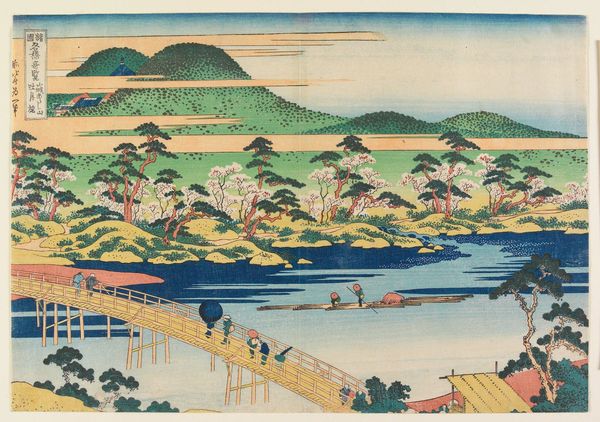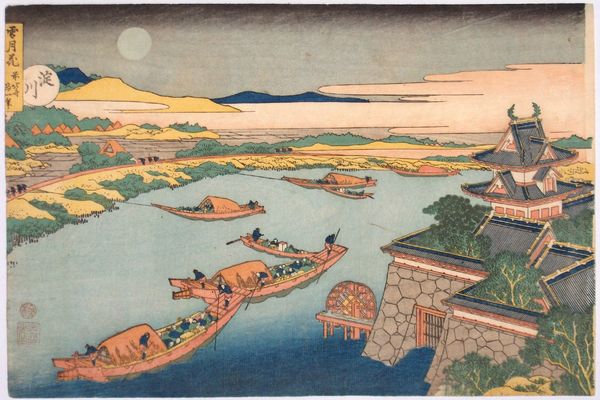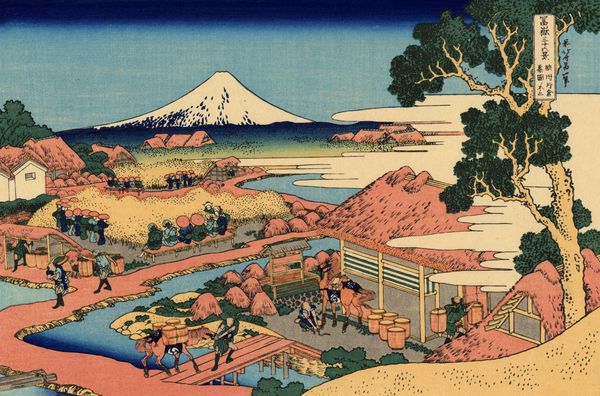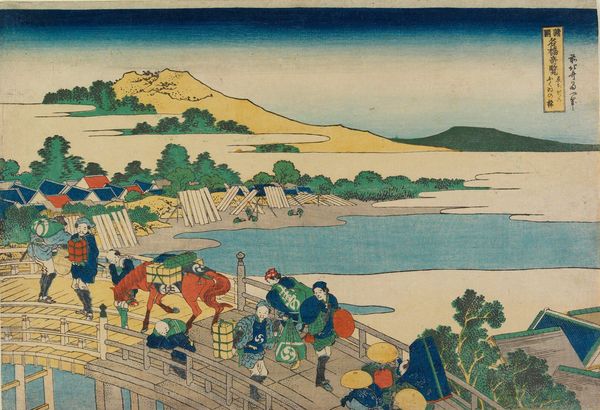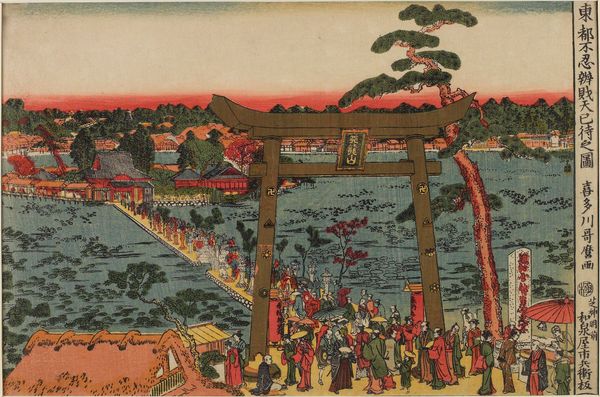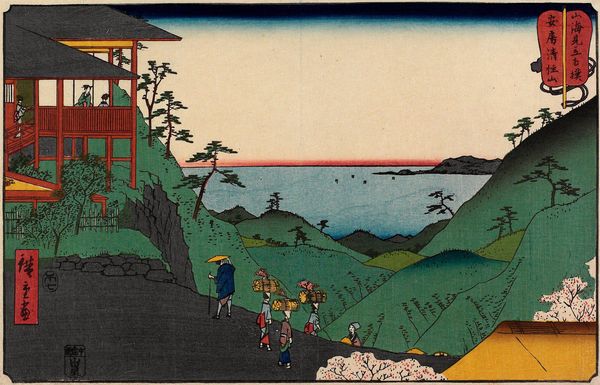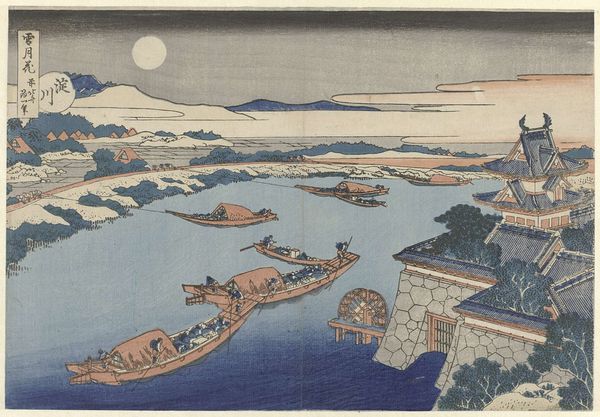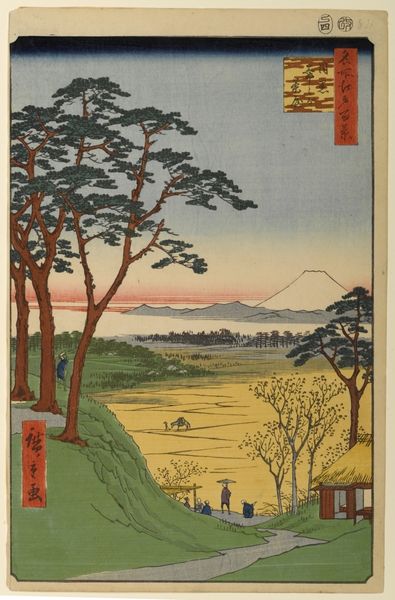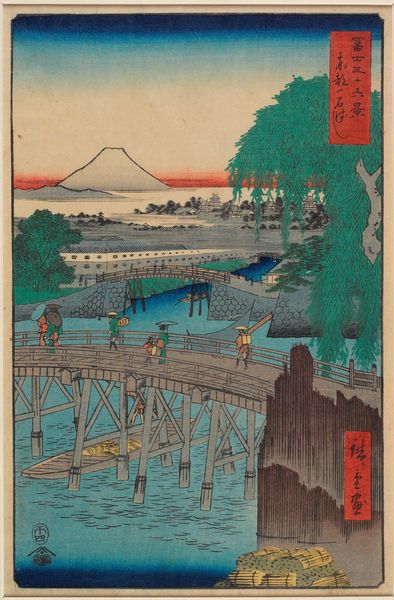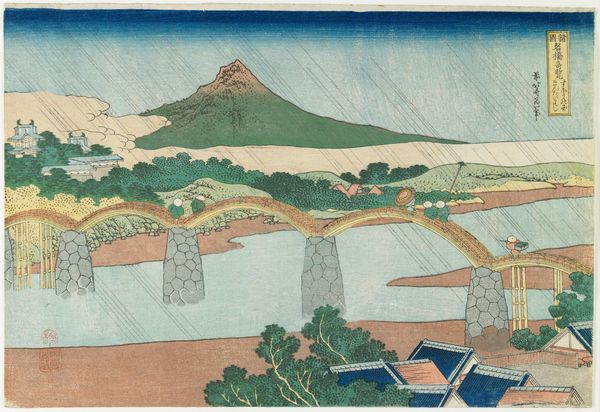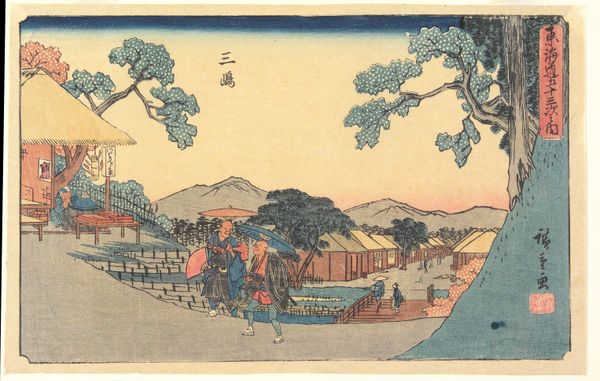
The Togetsu Bridge at Arashiyama in Yamashiro Province c. 1834
0:00
0:00
Dimensions: 10 3/16 × 15 3/16 in. (25.8 × 38.5 cm) (image, sheet, horizontal ōban)
Copyright: Public Domain
Editor: This is "The Togetsu Bridge at Arashiyama in Yamashiro Province," a woodblock print with ink and colour, made around 1834 by Katsushika Hokusai. It's striking how the composition is structured—the bridge cutting across the scene, the layering of the landscape. How do you interpret this work? Curator: This print invites us to consider the intersection of nature, culture, and lived experience in 19th-century Japan. The bridge itself, acting as a connector, speaks to the importance of infrastructure and trade in daily life. But it’s crucial to remember that landscapes in Ukiyo-e weren't just passive backdrops. Editor: Right, they are so constructed! Curator: Exactly. This scene presents a particular view of harmonious coexistence, perhaps intentionally downplaying social and economic inequalities. The figures crossing the bridge are a part of that landscape, aren’t they? Think about the history of woodblock printing—how it democratized art, bringing it to a wider audience. How does this democratization, this accessibility, challenge elitist views of art production and consumption even today? Editor: I hadn’t considered the political aspect of making art so accessible. Curator: These prints functioned as a form of cultural commentary, reflecting and shaping public perceptions. Hokusai was very interested in everyday people... Look how he centres the landscape with its inhabitants. What’s the bridge signifying for the local economy? And who, perhaps, isn’t represented here? Editor: Thinking about who *isn’t* included makes me question what narrative is privileged here and whose voices are being silenced. Curator: Precisely. Art history isn't just about aesthetics. It is very much a commentary of culture.
Comments
No comments
Be the first to comment and join the conversation on the ultimate creative platform.
